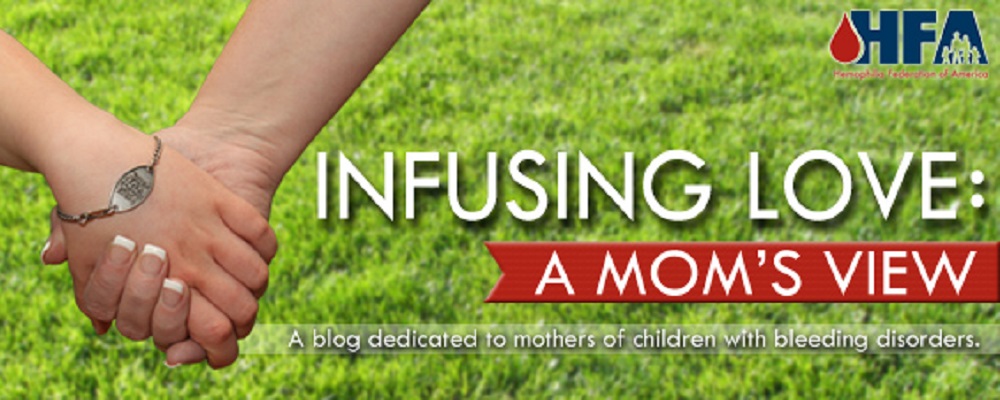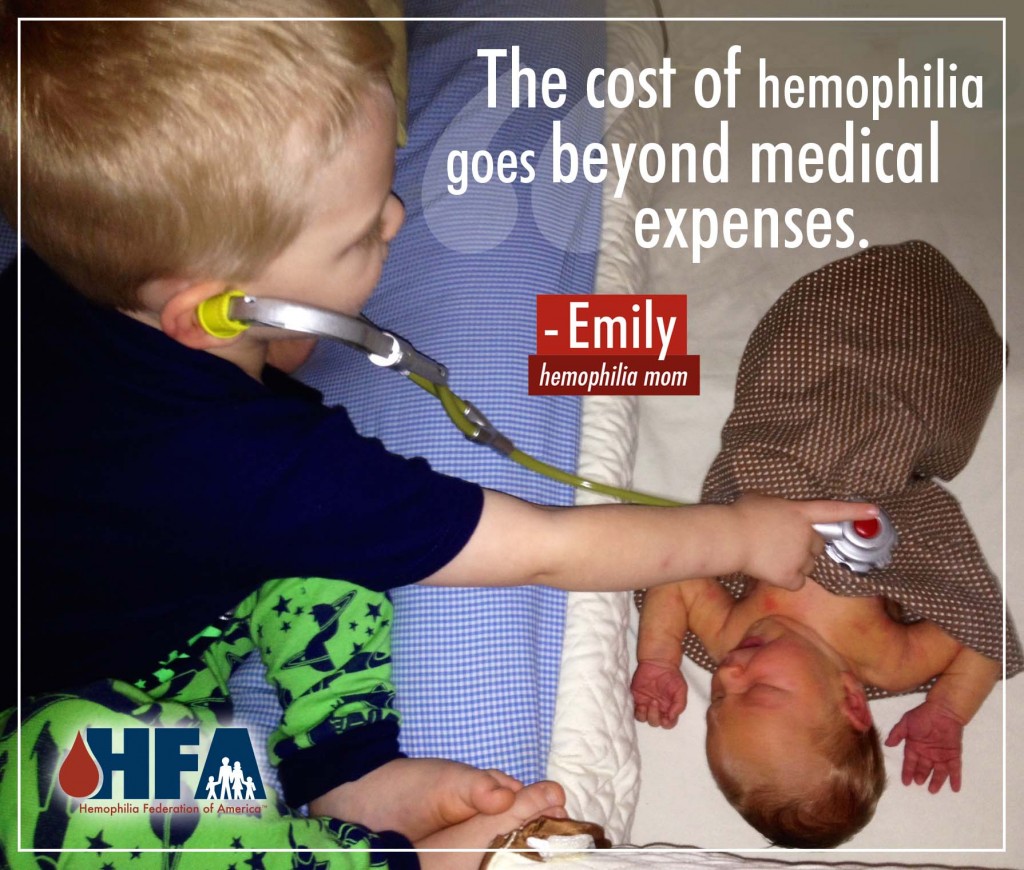
We’ve all read those statistics that discuss the cost of raising a child. Most I’ve seen report the costs in the $250,000 range. Kids are expensive. Just recently, at Target, our cart contained a variety of things that were not on my list and, of course, I had to actively tell my 4-year-old that he could not have the $180.00 Yoda action figure that would teach him how to be a Jedi. He graciously settled on a .99-cent bottle of bubbles.
Those statistics lay out all the varying costs of day-to-day living, but they do not account for the cost of raising a child with special medical needs. A bleeding disorder is not a temporary crisis. Your child’s medical costs year after year are mind-boggling. A week does not go by that we do not receive a medical or pharmacy bill in the mail. I can tell, just by the envelope, if it is a bill for factor, a doctor visit, lab work, or an emergency room visit. Each is just slightly different, although from the same hospital system, and I have mastered the ability to know the difference.
I recently had a conversation with another parent with a child living with a chronic condition. We agreed that both of our families struggle to get ahead financially. We have friends with similar yearly salaries and they are buying beautiful houses, new cars, taking vacations, and spending money on a whole host of other things. Yet here we are watching money fly in our bank account and right back out to pay our medical expenses. There is a false understanding by most who never really deal with insurance that insurance covers everything, but the reality is the cost of a hospital stay or an ER visit goes above and beyond what insurance pays. We pay for meals, parking, gas, lost hours at work, and a host of other things we cannot submit to our insurance. This is what actuals drains our bank account.
There is a false understanding by most who never really deal with insurance that insurance covers everything, but the reality is the cost of a hospital stay or an ER visit goes above and beyond what insurance pays. We pay for meals, parking, gas, lost hours at work, and a host of other things we cannot submit to our insurance. This is what actuals drains our bank account.
What has become very apparent are not the actual exponential medical costs, but the “other costs.” These costs are the ones you cannot always add up on a calculator, because they include things like our career choices and where to live. A bleeding disorder also can guide how many children we may or may not have. It carries a weight like no other.
My husband and do not have the opportunity or the cash flow to do crazy, cool date nights to maintain our marriage, but instead we have Chipotle take out dates. After the boys are sleep, one of use will go pick up burrito bowls and a shared Coke as we spend the evening relaxing on the couch catching up on overdue TV shows. We cherish those moments.
And even though we have found a bit of time for ourselves, we still see the impact on our children. When you have multiple children, and one does and one does not have a bleeding disorder you see the extreme cost differences. There is a tremendous amount of guilt regarding how we bridge that gap, how do we balance this obvious difference, which I contend will only increase as they get older. Instead I try to remember that our money is well spent on the health of our children, regardless of how much we spend. And we try to spend more time together.
It is for these reasons and so many more that we value our family. We stress about the financial future, one that hinges on the whim of my husband’s employer and if they raise premium rates at the same, huge, rate each year. But we also focus on family dinners, on being there for our children both physically and emotionally. We invest in them and not in stuff, because we can’t really afford it anyway. When our children are grown, I guess, we can add it all up and see just how much they cost, but I can guarantee that we long surpassed the million-dollar mark and that is okay.
Emily Boyer lives with her husband, Geoff, and 4-year-old son, Logan, and infant son, Ryan, in Minnesota.
*Note: “Infusing Love: A Mom’s View,” is a blog collection of personal opinions and a representation of individuals experiences. While extensive efforts are made to ensure accuracy of the content, the blog entries do not represent HFA or its Board of Directors. The blog is also not intended to be construed as medical advice or the official opinion/position of HFA, its staff, or its Board of Directors. Readers are strongly encouraged to discuss their own medical treatment with their healthcare providers.



